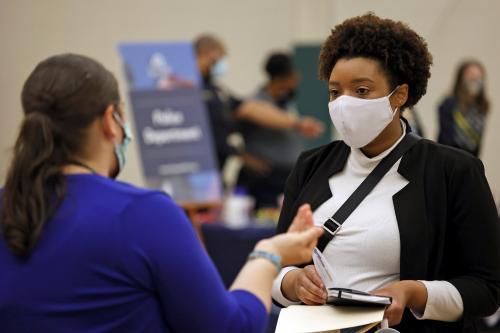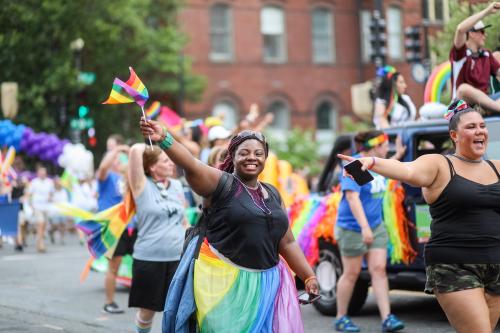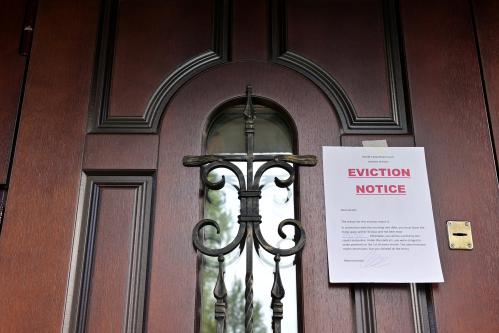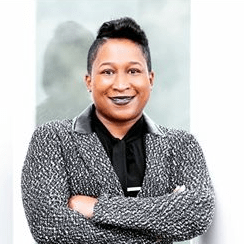This May, the University of North Carolina’s Board of Trustees denied a tenure position to Nikole Hannah-Jones, a Pulitzer-Prize-winning journalist and creator of The New York Times’ 1619 Project. Hannah-Jones had become the target of bigoted, conservative angst for the 1619 Project, which recast the role of slavery and its consequences for Black Americans as a central piece of the nation’s founding.
After a month of student and faculty protest, the Board reversed its decision and granted Hannah-Jones tenure. But she rebuffed the position, saying in a July 6 statement that she refused to “work at an institution whose leadership permitted this conduct and has done nothing to disavow it.”
Hannah-Jones’ ordeal stirred a great amount of discussion and debate, but her experience is emblematic of a larger problem. Faculty of color—particularly Black faculty—are underrepresented on most U.S. college and university campuses. In 2018, there were 832,119 full-time faculty members at all degree-granting institutions. Of those, 69% were white, 5.5% were Black, 5% were Latino or Hispanic, and 10% were Asian American.
The story is even more bleak when faculty rank is considered. Faculty rank represents the professional ladder from instructor to assistant professor to associate professor to professor. Among female faculty, Black women represented 7.7% of assistant professors, 6.7% of associate professors, and 4.7% of professors. Among male faculty, Black men represented 5% of assistant professors, 5% of associate professors, and 3.3% of professors.
However, a bright spot for diverse faculty can be found in the nation’s system of historically Black colleges and universities (HBCUs). That’s where Hannah-Jones eventually landed, announcing that she would become the inaugural Knight Chair in Race and Reporting at Howard University in Washington, D.C., which was founded in 1867 to serve the formerly enslaved and their descendants.
Black scholars certainly need the cultural protection that HBCUs can provide. However, those institutions need the resources to adequately develop that talent.
HBCUs are chronically underfunded due to state underinvestment, lower alumni contributions (related to lower Black incomes and Black wealth), and lower endowments. And while both public and private HBCUs rely more heavily on public dollars and tuition than predominantly white institutions (PWIs), according to the American Council on Education, “Public and private HBCUs experienced the steepest declines in federal funding per [full-time equivalent] student between 2003 and 2015.”
HBCUs are systematically shorted of critical resources. This year, a committee established in the Tennessee legislature determined that the HBCU Tennessee State University never received an estimated $500 million it had been entitled to from the state’s funding scheme. “I don’t care if that’s 100 percent accurate, that’s just not going to happen,” a Republican state senator and co-chair of the study committee reportedly said on granting the school the undelivered funding.
In Maryland, after a 13-year legal battle, the General Assembly recently agreed to give $577 million to HBCUs Morgan State University, Coppin State University, Bowie State University, and the University of Maryland Eastern Shore. The universities were part of a lawsuit that sought damages because the state failed to sufficiently implement a plan to desegregate higher education, create an equitable funding structure, and eliminate duplicative academic programs that place HBCUs at a competitive disadvantage. Previously, Governor Larry Hogan offered only $200 million to settle the lawsuit, which a state elected official called a dismissive, take-it-or-leave-it offer.
All together, the 10 largest HBCU endowments in 2020 totaled $2 billion, compared to $200 billion across the top 10 PWI endowments. The combined endowment for every HBCU in the country through 2019 was just over $3.9 billion. For context, New York University alone had an endowment of $4.3 billion that year.
Nikole Hannah-Jones’ new employer, Howard University, had the largest 2020 endowment among HBCUs, at $712 million. Her departure from UNC to Howard shows that almost 200 years after the founding of the nation’s first HBCU, Cheyney University in Pennsylvania, these schools still provide a space where the people working for racial justice can expect to be respected and appreciated. And for African American students, they represent the best mechanism—and for some, the only opportunity—to receive a college education.
Hannah-Jones’ choice to teach at an HBCU is part of a growing trend of high-profile scholars, coaches, and athletes who recognize the value of these important institutions. Fellow journalist Ta-Nehisi Coates joined Hannah-Jones at Howard this year; in 2020, football legend Deion Sanders took the head coaching job at Jackson State University and five-star basketball recruit Makur Maker committed to and attended Howard; and in 2021, ex-NBA star Reggie Theus took the head coaching position at Bethune-Cookman University.
In her statement explaining why she ultimately chose to reject UNC’s offer and come to Howard, Hannah-Jones said, “The burden of working for racial justice is laid on the very people bearing the brunt of the injustice, and not the powerful people who maintain it.” Black Americans’ demands for respect and protection should lead to greater investments in HBCUs from the people and governments who’ve denied and extracted these resources for far too long.









Commentary
Underfunding HBCUs leads to an underrepresentation of Black faculty
August 4, 2021